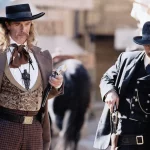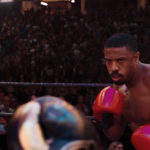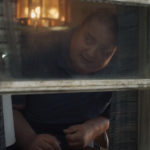
One of my favorite pieces of trivia about 1974’s The Texas Chain Saw Massacre is that director Tobe Hooper hoped for the film to get a PG rating — with the PG-13 not yet in existence, there was no bridge between PG and R. Of course, the sheer sense of terror and brutal violence (and, more than likely, the word “massacre” being present in the title) earned it an R, but it wasn’t for lack of trying.
In his quest for a tamer rating (and, thus, a more accessible film), Hooper toned down the on-screen gore. This makes for a relatively bloodless horror movie, which makes it even more bizarre that this is the film that pioneered the slasher genre, along with countless other horror tropes that are still used (and overused) to this day. So how does it hold up almost fifty years later, especially among other gorier classic horror films?
I see The Texas Chain Saw Massacre as the harbinger of modern horror. Though 1978’s Halloween and 1980’s Friday the 13th and their mostly horrendous sequels truly popularized the concept of the “final girl” and the “faceless killer,” Chain Saw did it all first, and in incredibly iconic fashion.

Let’s start with the most recognizable element of the film (aside from its stunning final sequence): Leatherface, the youngest of the cannibalistic Sawyer family, who wears a mask made of human skin. Played by Gunnar Hansen, Leatherface is the embodiment of everything that’s terrifying about this movie — what could you do if a hulking mass of a man started picking off you and your friends, one by one, even before his family joined in?
The imposing shot of Leatherface shutting the sliding door (which remains a genre influence such as in the ending of Saw) terrified me when I was kid — and I hadn’t yet seen the full movie yet. Part of it is the constantly nagging “what if this happened to me?” thought, and part of it is the mystery. Who is this man? Why does he do these things? Do I even really want these answers?
I have found that horror franchises decrease in effectiveness when the faceless villains are assigned lore and character. That’s why a lot of horror sequels don’t work as well as the original, and that same problem affects the Texas Chainsaw sequels. Most of them are soulless reboots and remakes that reset the continuity, and don’t just retcon the magic of the original — they lose it altogether.

Maybe it’s beneficial to know that Leatherface is the youngest member of the inbred Sawyer family, and he lacks the mental capacity to distinguish right from wrong — but all that is better when left up to the imagination. Obviously, if a movie makes money (especially a horror film), the chances of a sequel become higher, and they may introduce factors that impact the enjoyment of the original. Horror movies have been doing that since the very early 1980s, and there’s no sign of stopping now.
The main characters of Texas Chain Saw that we’re meant to empathize with are a group of teenagers, of which final girl Sally Hardesty (Marilyn Burns) is strangely the least interesting. There’s also Sally’s wheelchair-bound brother Franklin (Paul A. Partain) and their friends Kirk (William Vail), Jerry (Allen Danziger) and Pam (Teri McMinn). None of them are given much development, and thus they kick off the time-honored horror movie tradition of baseline, cliché characters that we have no connection to being killed somewhat unceremoniously as happens more often than not in the genre.
Also, Sally is relatively unremarkable in the grand pantheon of final girls, which makes it all the more interesting that she is somehow one of the most memorable. It is largely the result of the movie that she’s in (and that killer final sequence), and not by her actions alone. Part of that is due to the lack of characterization, an element improved upon in later slashers, but I find it fascinating that one of the earliest prototypical slasher films doesn’t handle its main characters with any sort of care. It seems the time-honored tradition was alive and well from the beginning.

The fact of the matter is that the primal fear that the situation inspires is more terrifying than any chainsaw-wielding killer the movie can throw at us. Being stuck in the middle of nowhere with no apparent escape and someone hunting you takes you out of your comfort zone, and does so for the length of its runtime. That’s what Chain Saw does best — it’s uncomfortable, but that’s exactly what it’s trying to be.
There’s a certain element of dark humor to it as well, and the infamous dinner scene exhibits that perfectly. Sally is tied up as Leatherface serves dinner, with his brothers Drayton (Jim Siedow) and Nubbins (Edwin Neal) and corpse-like grandfather (hilariously played by the 21-year-old John Dugan). They let loose with their batshit insane cannibalistic tendencies, surely in an effort to make Sally as scared as possible. And scared she is; I wouldn’t be surprised if, statistically, Sally holds the final girl record for the most screams in a single scene.
The scene, aside from being deeply disturbing, is darkly funny. The screaming gets irritating after a while (which only adds to the discomfort), but there’s something perversely farcical about the picture and setup of a “nuclear family” being inverted so horribly. The scene actually took 27 consecutive hours to shoot, and was apparently hellish for both cast and crew. The good news is that their hard work paid off — it’s the best scene in the movie.

I love The Texas Chain Saw Massacre. It may have kick-started multiple generations of terrible horror movies and their even worse sequels, but it’s incredibly well-made, doesn’t bog itself down with any unnecessary lore, and — most importantly — it still holds up today. It’s one of the most influential horror movies ever, and is still one of the best.
If you want to look into any of the sequels, there’s really only one worth checking out. The first, released in 1986, finds Tobe Hooper in the “screw it” phase of his career, and it’s the last of Texas Chain Saw’s redeemable sequels. Afterward, the franchise delves into retconning, prequels and reboots, and simply loses interest in telling an original story with a unique spin on the material. Let’s see if the new sequel can break the cycle…

The Texas Chain Saw Massacre is available to stream on Showtime and IMDB TV and for rent/purchase at digital retailers. The Texas Chainsaw Massacre (2022) debuts on Netflix tomorrow.
















